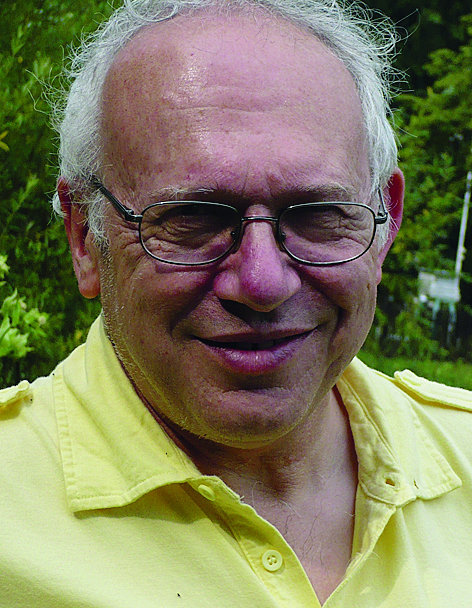Shostakovich was in his late thirties when he composed his Piano Trio No. 2. Though he had emerged from the dangerous situation of the 1930s, when his opera Lady Macbeth of Mtsensk had been denounced by Stalin and friends and associates had disappeared during the Soviet leader’s Great Purge, life remained difficult.
For the first three years of World War II, he continued to live in Leningrad where, during the siege of the city by German forces, he served as a firefighter. As Soviet fortunes began to improve, in the spring of 1943 he and his family moved to Moscow.
The best recording of Shostakovich's Piano Trio No. 2
Smetana Trio Supraphon SU41452 375
Despite official Soviet disapproval of the Second Piano Trio, the composer made two recordings of the work in the immediate post-war era. The first, featuring the performers who gave the world premiere, dates from 1945. It was followed a year or so later by one taped in Prague with violinist David Oistrakh and cellist Miloš Sádlo. Currently available as downloads on the Doremi label, both performances are fascinating historical documents, even though they are captured in somewhat inferior sound. What they certainly reveal is the brilliance of Shostakovich’s piano playing, as well as some notable differences in matters of tempo and nuance that don’t always tally with the markings in the score.
One consistent feature of these recordings is the frighteningly breakneck speeds adopted by both sets of these performers in the Scherzo. Of the few modern ensembles that get anywhere near to this daredevil approach, undoubtedly the most compelling interpretation comes from the Smetana Trio. The impact of its no-holds-barred breathless approach to this movement is overwhelming, making the music sound completely unhinged.
The Smetana Trio revels in the extremes of dynamics, texture and mood that characterises Shostakovich’s score, yet achieves the greatest emotional intensity without recourse to idiosyncratic interpretative mannerisms. What is particularly striking about this performance is its comprehensive mastery of the music’s architecture, a good example being the subtle way the players build up tension in the slow tread of the Passacaglia while at the same time maintaining a deliberately subdued colour throughout. This strategy pays particular dividends in the long-term connection between the slow movement and the finale, thereby making the outburst of anger that engulfs the climax near the end of the work and the ensuing collapse into near exhaustion in the coda all the more shattering.
Perhaps the most impressive aspect of all comes earlier on. At the opening, for example, violinist Jiří Vodička follows cellist Jan Páleníček’s glassy harmonics by imbuing his lamenting theme with a distinctive sobbing vibrato that sets the mournful tone for the rest of the movement. Once the music gathers momentum, the Smetana Trio is adept at negotiating the intensification of the musical argument, avoiding awkward gear changes every time the music’s emotional temperature rises.
Three other great recordings of Shostakovich's Piano Trio No. 2
Trio Wanderer Harmonia Mundi HMG501825
If anything, the Trio Wanderer offers an even wider range of tonal colouring than the Smetana Trio, though the performers are not quite as reckless as their Czech colleagues in the approach to the Scherzo. What really puts this performance on the highest level is the eloquence in the Passacaglia, a moving tribute to the memory of Shostakovich’s closest friend. Controversially, the players don’t follow Shostakovich’s request for the strings to put their mutes on near the end of the finale, but this doesn’t diminish the power or intensity of the playing.
Florestan Trio Hyperion CDA67834
The Florestan Trio provides a more objective interpretation, with a cooler approach in the Passacaglia that emphasises poise and nobility rather than the heart-rending grief that is characteristic of some other performances. Initially the faster tempo adopted in the finale seems like a miscalculation, robbing the music of its sense of impending doom. But as the movement progresses, this feeling dissipates as the playing gathers strength and builds to a powerful climax. The closing bars are incredibly moving, especially the way the ghostly sounds disappear into the ether.
Martha Argerich (piano), Maxim Vengerov (violin), Gautier Capuçon (cello) Warner 476 8712
Martha Argerich is exactly the kind of charismatic performer to bring the greatest dramatic intensity to this score. Whereas her live 1990s DG recording with Gidon Kremer and Mischa Maisky is bedevilled by some self-conscious distortions of rhythm, this later recording with younger virtuosos, from a 2003 concert in Lugano, is electrifying. Argerich, Vengerov and Capuçon don’t quite go hell for leather in the Scherzo to the same extent as the Smetanas, but they do imbue the snarls and percussive passages with visceral power.
The best recordings of pianist Martha Argerich
And one to avoid…
Bringing together an all-star cast – pianist Emanuel Ax, violinist Isaac Stern and cellist Yo-Yo Ma – does not guarantee the most compelling performance. The problem here is that the players don’t always appear completely engaged, so that there are passages which tend to sag. And Isaac Stern, nearing the end of his career, doesn’t offer as powerful and defined a performance as Yo-Yo Ma.
Read our reviews of the latest Shostakovich recordings here
Here are the best music streaming services on offer
